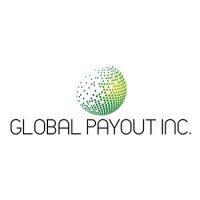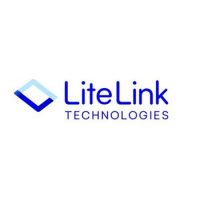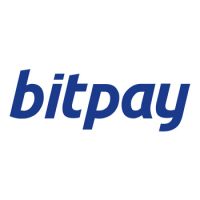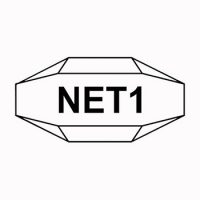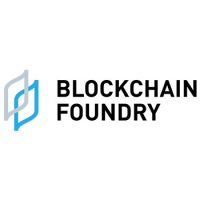Blockchain Press Releases
Contact Center Software Market to be Worth $149.58 Billion by 2030: Grand View Research, Inc.
SAN FRANCISCO, July 10, 2023 /PRNewswire/ — The global contact center software market size is expected to reach USD 149.58 billion by 2030, expanding at a CAGR of 23.9% from 2023 to 2030, according to a new report by Grand View Research, Inc. The contact center software market encompasses software and services used by organizations to streamline business processes and enhance customer interactions. It involves real-time call monitoring, agent assignment, and centralized reporting for improved efficiency. Contact center software plays a crucial role in facilitating effective communication between contact center workers and clients, leading to enhanced productivity.
Key Industry Insights & Findings from the report:
- The customer collaboration segment is expected to witness significant growth over the forecast period. Customer collaboration solutions are widely used by businesses to streamline communication between customers and relevant departments. Customer collaboration tools are instant, effective, and convenient to use and can potentially simplify two-way interaction. Businesses are adopting customer collaboration solutions to quickly track, receive, and resolve customer support queries.
- The managed services segment is expected to witness significant growth over the forecast period. Managed services help in managing business infrastructure and application platforms. These services can particularly help the customer service team in quickly identifying faults, isolating the root cause of infrastructure outages, and subsequently, working more reliably and efficiently. Businesses opt for managed services to effectively manage their complex IT infrastructure.
- The growing expenses being incurred on on-premise systems amid a highly competitive business environment are prompting businesses to switch to cloud-based solutions. Cloud-based contact center solutions can effectively handle all outbound and inbound communications while offering an all-inclusive suite of applications and tools that can allow businesses to deliver efficient customer service across multiple channels, including SMS, email, voice, and social media.
- The increasing adoption of emerging technologies by large enterprises to automate repetitive tasks and improve operational efficiency is driving the demand for contact center solutions in large enterprises. As organizations strive to enhance productivity and streamline their customer service operations, the need for advanced contact center solutions is projected to grow significantly.
- Consumer goods and retail businesses are focusing on strengthening their multichannel interactions with employees and customers. The rising popularity of online shopping is further driving the need for continuous customer service facilities, which in turn, is expected to propel the adoption of contact center solutions by the incumbents of the consumer goods & retail industry.
- Asia Pacific is anticipated to emerge as the fastest-growing regional market owing to a broader customer base and the presence of a substantial number of small and medium enterprises in the region. Intensifying competition between the local and international companies is also expected to propel the adoption of contact center solutions.
Read 120 page market research report, “Contact Center Software Market Size, Share & Trends Analysis Report By Solution, By Service, By Deployment (Hosted, On-premise), By Enterprise Size, By End-use (BFSI, Government, Healthcare, IT & Telecom), By Region, And Segment Forecasts, 2023 – 2030“, published by Grand View Research.
Contact Center Software Market Growth & Trends
The strong emphasis businesses are putting on leveraging the advances in the latest technologies and integrating Artificial Intelligence (AI) and machine learning into their business processes is expected to drive the market further. For instance, in May 2023, Anthropic, an AI safety and research company, and Zoom, a video communication platform provider, established a partnership where Anthropic’s generative AI model would be integrated into Zoom’s Contact Center portfolio. As part of this collaboration, Zoom also made an investment in Anthropic, although specific details regarding the amount and terms of the investment were not disclosed.
The adoption of advanced technologies such as cloud-based solutions and AI has emerged as a key driver for the contact center software market. Cloud-based solutions offer scalability, flexibility, and cost-effectiveness, allowing organizations to easily manage and scale their contact center operations. AI-powered features like chatbots, natural language processing, and sentiment analysis enhance customer interactions by providing personalized and efficient support. These technologies not only improve customer satisfaction but also contribute to operational efficiency, enabling contact centers to handle a higher volume of inquiries and optimize agent productivity.
The COVID-19 pandemic has had a significant positive impact on the contact center software market. With the sudden shift towards remote work and the need for virtual customer service solutions, organizations across various industries have turned to contact center software to ensure uninterrupted customer support. The pandemic has highlighted the importance of robust and flexible contact center solutions that can be accessed remotely. As a result, businesses have invested heavily in contact center software to enable their agents to work from home and continue providing seamless customer service.
Contact Center Software Market Report Scope
|
Report Attribute |
Details |
|
Market size value in 2023 |
USD 33.38 billion |
|
Revenue forecast in 2030 |
USD 149.58 billion |
|
Growth rate |
CAGR of 23.9% from 2023 to 2030 |
|
Base year of estimation |
2022 |
|
Historical data |
2017 – 2021 |
|
Forecast period |
2023 – 2030 |
Contact Center Software Market Segmentation
Grand View Research has segmented the global contact center software market on the basis of solution, service, deployment, enterprise size, end-use, and region:
Contact Center Software Market – Solution Outlook (Revenue, USD Billion, 2017 – 2030)
- Automatic Call Distribution (ACD)
- Call Recording
- Computer Telephony Integration (CTI)
- Customer Collaboration
- Dialer
- Interactive Voice Responses (IVR)
- Reporting & Analytics
- Workforce Optimization
- Others
Contact Center Software Market – Service Outlook (Revenue, USD Billion, 2017 – 2030)
- Integration & Deployment
- Support & Maintenance
- Training & Consulting
- Managed Services
Contact Center Software Market – Deployment Outlook (Revenue, USD Billion, 2017 – 2030)
- Hosted
- On-premise
Contact Center Software Market – Enterprise Size Outlook (Revenue, USD Billion, 2017 – 2030)
- Large Enterprise
- Small & Medium Enterprise
Contact Center Software Market – End-use Outlook (Revenue, USD Billion, 2017 – 2030)
- BFSI
- Consumer Goods & Retail
- Government
- Healthcare
- IT & Telecom
- Traveling & Hospitality
- Others
Contact Center Software Market – Regional Outlook (Revenue, USD Billion, 2017 – 2030)
- North America
- U.S.
- Canada
- Europe
- Germany
- U.K.
- Spain
- France
- Asia Pacific
- China
- India
- Japan
- South Korea
- Australia
- Latin America
- Brazil
- Mexico
- Middle East & Africa
- Kingdom of Saudi Arabia (KSA)
- UAE
- South Africa
List of Key Players in the Contact Center Software Market
- 8X8, Inc.
- ALE International
- Altivon
- Amazon Web Services, Inc.
- Ameyo
- Amtelco
- Aspect Software
- Avaya Inc.
- Avoxi
- Cisco Systems, Inc.
- Enghouse Interactive Inc.
- Exotel Techcom Pvt. Ltd.
- Five9, Inc.
- Genesys
- Microsoft Corporation
- NEC Corporation
- SAP SE
- Spok, Inc.
- Talkdesk, Inc.
- Twilio Inc.
- UiPath
- Unify Inc.
- VCC Live
Check out more related studies published by Grand View Research:
- Contact Center As A Service (CCaaS) Market – The global contact center as a service market size is expected to reach USD 17.12 billion by 2030, registering a CAGR of 19.1% from 2023 to 2030, according to a new report by Grand View Research, Inc. The market growth can be attributed to the rising adoption of cloud-based contact center services by enterprises to offer better flexibility and customer convenience. Many organizations are adopting Business Intelligence (BI) technology, as it provides them with a holistic view of agent performance and helps measure how they are achieving organizational goals.
- Contact Center Analytics Market – The global contact center analytics market size is expected to reach USD 5.75 billion by 2030, expanding at a CAGR of 19.3% over the forecast period, according to a new report by Grand View Research, Inc. The growing need among contact center companies to track and measure business performance at each level is expected to drive market growth. Contact center analytics also enables companies to reduce overhead and operational expenses. The funding raised by contact center service providers is also expected to drive market growth. For instance, in May 2021, ASAPP, Inc., an Artificial Intelligence (AI) research-driven customer experience company, announced that it raised USD 120 million. The company would use this funding to expand its portfolio and market reach.
- BFSI Contact Center Analytics Market – The global BFSI contact center analytics market size is expected to reach USD 842.5 million by 2028, registering at a CAGR of 16.3% from 2021 to 2028, according to a new report by Grand View Research, Inc. The BFSI sector increasingly demands contact center analytic solutions to analyze customer data and improve customer experience. The increasing efforts of BFSI firms to improve their operational performance and address customer requirements is also one of the major factors driving the market growth.
Browse through Grand View Research’s Next Generation Technologies Research Reports.
About Grand View Research
Grand View Research, U.S.-based market research and consulting company, provides syndicated as well as customized research reports and consulting services. Registered in California and headquartered in San Francisco, the company comprises over 425 analysts and consultants, adding more than 1200 market research reports to its vast database each year. These reports offer in-depth analysis on 46 industries across 25 major countries worldwide. With the help of an interactive market intelligence platform, Grand View Research Helps Fortune 500 companies and renowned academic institutes understand the global and regional business environment and gauge the opportunities that lie ahead.
Contact:
Sherry James
Corporate Sales Specialist, USA
Grand View Research, Inc.
Phone: 1-415-349-0058
Toll Free: 1-888-202-9519
Email: [email protected]
Web: https://www.grandviewresearch.com
Grand View Compass | Astra ESG Solutions
Follow Us: LinkedIn | Twitter
Logo: https://mma.prnewswire.com/media/661327/Grand_View_Research_Logo.jpg
View original content:https://www.prnewswire.co.uk/news-releases/contact-center-software-market-to-be-worth-149-58-billion-by-2030-grand-view-research-inc-301872730.html

Blockchain Press Releases
Bybit Presents “Chicken Trader”: The World’s First Poultry-Powered Trading Showdown Livestream

DUBAI, UAE, May 22, 2025 /PRNewswire/ — Bybit, the world’s second-largest cryptocurrency exchange by trading volume, is taking novel trading challenges to new heights with the announcement of the Chicken Trader special, an unprecedented livestream session where professional crypto traders will have their authority challenged by their own pet chickens.
Scheduled to air on May 23, 2025 at 8AM UTC, the first-of-its-kind spectacle will feature Dylon Lord of Entry, Crypto trader & host at Crypto Banter, and DaviddTechI, Crypto trader & Co-Founder at DaviddTech, two seasoned trading pros whose market fortunes will temporarily rest on the shoulders of their feathered advisors.
Highlights
- Chickens Calling the Shots: Each chicken will peck at different treats representative of various trading options to channel their instruction. Yielding the strategizing power to the beaks of the chickens, both traders will be asked to execute the trading decisions faithfully.
- Live PnL Showdown: The resulting profit and loss (PnL) percentage will be tracked real-time during the livestream—and promises to shock the traders and the audience.
- Predictions and Live Giveaways: The audience will share in a 1,000 USDT prize pool by voting and participating in the red packets giveaway.
The special edition at Bybit Live is for entertainment purposes only and does not constitute financial or investment advice. Participants should be mindful of the risks associated with crypto trading.
No animals are harmed in the process. Terms and conditions and usual disclaimers apply. The not-to-be-missed battle will go live on May 23, and users may subscribe to upcoming session on Bybit Live.
#Bybit / #TheCryptoArk
About Bybit
Bybit is the world’s second-largest cryptocurrency exchange by trading volume, serving a global community of over 70 million users. Founded in 2018, Bybit is redefining openness in the decentralized world by creating a simpler, open and equal ecosystem for everyone. With a strong focus on Web3, Bybit partners strategically with leading blockchain protocols to provide robust infrastructure and drive on-chain innovation. Renowned for its secure custody, diverse marketplaces, intuitive user experience, and advanced blockchain tools, Bybit bridges the gap between TradFi and DeFi, empowering builders, creators, and enthusiasts to unlock the full potential of Web3. Discover the future of decentralized finance at Bybit.com.
For more details about Bybit, please visit Bybit Press
For media inquiries, please contact: [email protected]
For updates, please follow: Bybit’s Communities and Social Media
Discord | Facebook | Instagram | LinkedIn | Reddit | Telegram | TikTok | X | Youtube

Photo – https://mma.prnewswire.com/media/2694099/Bybit_Presents_Chicken_Trader_The_World_s_First_Poultry_Powered_Trading_Showdown.jpg
Logo – https://mma.prnewswire.com/media/2267288/Logo.jpg
![]() View original content:https://www.prnewswire.co.uk/news-releases/bybit-presents-chicken-trader-the-worlds-first-poultry-powered-trading-showdown-livestream-302463077.html
View original content:https://www.prnewswire.co.uk/news-releases/bybit-presents-chicken-trader-the-worlds-first-poultry-powered-trading-showdown-livestream-302463077.html

Blockchain
Blocks & Headlines: Today in Blockchain – May 21, 2025

In an era defined by rapid innovation and regulatory shifts, today’s blockchain briefing spotlights five pivotal developments: enterprise-grade data integration, municipal crypto pilots, state-level policy hearings, AI-powered token growth, and secure communications on a public ledger. Across these stories, three key trends emerge:
-
Enterprise Adoption & Data Integration
-
Government Experimentation & Oversight
-
AI & Security Innovations in Crypto
Below, we dissect each story’s essence, unpack its broader implications, and offer opinion-driven insight for Web3 stakeholders.
1. Space and Time Joins Forces with Microsoft Fabric
Source: Chainwire / The Defiant
On May 20, 2025, Space and Time Labs (SXT)—a zero-knowledge data platform backed by Microsoft’s M12 Ventures—announced integration of its multichain index (Bitcoin, Sui, Ethereum) into Microsoft Fabric’s OneLake environment. This partnership delivers real-time, verifiable blockchain data directly within Azure, enabling developers and enterprises to build data-driven Web3 and AI applications without custom pipelines.
Opinion: Embedding verifiable on-chain data into mainstream analytics tools marks a watershed moment. As traditional enterprises crave decentralized insights, Fabric’s native access to SXT’s ZK-proven data could accelerate blockchain analytics, foster hybrid cloud-Web3 solutions, and reduce vendor lock-in. Expect more legacy tech giants to pursue similar alliances.
2. New York City Eyes Crypto for Taxes & Records
Source: DL News
Mayor Eric Adams revealed plans to form a Digital Assets Advisory Council to explore crypto-based payments for municipal services, including taxes, birth/death certificates, and land records. While specifics remain under wraps, Adams highlighted zero-knowledge proofs as a privacy-preserving tool for public documentation on distributed ledgers.
Opinion: New York’s initiative signals growing municipal appetite for blockchain beyond investments. By potentially accepting tax payments in crypto and securing vital records on-chain, NYC could pioneer use cases that blend transparency with privacy. However, pilot programs must rigorously address volatility, regulatory compliance, and digital inclusion to avoid disenfranchising underserved communities.
3. Wyoming Committee Explores Blockchain, AI & Right-to-Repair
Source: Wyoming Public Media
During its first interim meeting (May 14–15, Jackson Hole), Wyoming’s Select Committee on Blockchain, Financial Technology and Digital Innovation reviewed the state’s proposed Wyoming Stable Token—tethered 1:1 to USD—and examined AI governance and right-to-repair legislation. The Stable Token Commission anticipates a July 4 alpha launch, while lawmakers debated CBDC distinctions, tokenized real-world assets, and consumer repair rights.
Opinion: Wyoming continues to cement its reputation as a blockchain haven. Explicit carve-outs distinguishing stablecoins from CBDCs, coupled with regulatory sandboxes for AI and repair laws, underscore a holistic approach to innovation. Other states should monitor Wyoming’s alpha testing outcomes to inform balanced policy frameworks that nurture Web3 while safeguarding consumer interests.
4. AI Tokens Surge in Crypto’s New Tango
Source: The Economic Times
Himanshi Lohchab reports that AI-centric utility tokens—built to autonomously execute services like compute renting (Render), predictive analytics (SingularityNET), and data marketplaces (Ocean Protocol)—have seen market caps soar from $2.7 billion to nearly $30 billion within a year. Key players include Near Protocol’s AI modules, ICP, The Graph, and emerging AI agents that generate revenue per usage. Institutional interest from Grayscale, BlackRock, and Fidelity further validates the trend.
Opinion: The AI-blockchain convergence is no fleeting fad. AI tokens promise programmable revenue streams and decentralized toolchains, but they also introduce autonomous risk vectors—buggy smart contracts, accountability gaps, and regulatory ambiguity. Security audits, standardized interoperability protocols, and clear legal frameworks will be crucial to sustain investor confidence.
5. BSV Association Selects Binarii Labs for Secure Communications
Source: CoinGeek (via PRNewswire)
The BSV Association has designated Binarii Labs to implement BinariiDSM, an encrypted file exchange and messaging suite that logs proofs of record on the BSV blockchain. This integration ensures immutable audit trails, data resilience, and end-to-end confidentiality for enterprises seeking verifiable trust without centralized intermediaries.
Opinion: As data privacy regulations tighten globally, blockchain-anchored communication platforms like BinariiDSM offer a compelling alternative to legacy VPNs and secure email. By immutably recording metadata on-chain, organizations can demonstrate compliance, simplify audits, and deter insider threats. Look for BSV’s secure-messaging model to inspire similar offerings on other smart-contract platforms.
Conclusion: Navigating a Dynamic Blockchain Frontier
Today’s stories reaffirm that blockchain is no longer an experimental niche—it’s permeating analytics, public services, legislative agendas, tokenomics, and secure communications. To thrive:
-
Forge Strategic Alliances: Enterprises should partner with ZK and data-fabric innovators to embed blockchain insights into their analytics stacks.
-
Pilot Pragmatically: Municipalities must balance visionary crypto use cases with compliance, volatility management, and equitable access.
-
Craft Balanced Policy: States can emulate Wyoming’s sandbox approach—distinguishing stablecoins from CBDCs, while addressing AI and repair rights.
-
Secure the Autonomous Agent Era: As AI tokens multiply, enforce rigorous security audits and interoperability standards.
-
Leverage On-Chain Trust: Consider blockchain-anchored communications for immutable audit trails and enhanced data resilience.
By embracing these actions, organizations and policymakers can harness blockchain’s transformative power while mitigating emerging risks.
The post Blocks & Headlines: Today in Blockchain – May 21, 2025 appeared first on News, Events, Advertising Options.
Blockchain Press Releases
OnRe, Backed by Ethena, Solana Ventures, and RockawayX Launches Structured Yield Product Combining Real-World Stability and On-Chain Upside

LONDON, May 21, 2025 /PRNewswire/ — Today, OnRe, the leading regulated on-chain reinsurance company, launches its ONe token. ONe is an accumulating token for LPs, currently offering projected returns of up to 40.35% consisting of reinsurance performance, collateral yield, and token incentives. OnRe unlocks previously inaccessible yield from the $750 billion global reinsurance market, and combines it with the digital asset market’s unique return attributes, resulting in a stable and scalable product.
Through its partnership with Ethena, OnRe allows users to deposit sUSDe into a reinsurance pool on Solana. Deposited sUSDe flows into a balanced reinsurance portfolio, carefully underwritten by OnRe’s underwriting and actuarial experts, then allocated across diversified insurance lines to generate uncorrelated yields. This enables on-chain capital markets to utilize this real-world asset class as liquid collateral across the ecosystem.
“OnRe provides the perfect real-world use case for sUSDe, allowing over $6bn in stable capital to earn additional, meaningful yield by deploying into one of the world’s most established financial systems. This partnership sets the stage for a new era of capital efficiency, transforming deposits into productive, yield-generating assets while opening a market that has long been out of reach for most investors.” — Guy Young, Founder of Ethena Labs.
OnRe’s blockchain-native structured product unlocks capabilities unreplicable in traditional finance, including upside participation through on-chain funding rates and integrations with other DeFi protocols to enhance capital efficiency.
In bearish markets, OnRe delivers consistent, stable yield through reinsurance exposure, independent of crypto and equity downturns. In bullish conditions, elevated on-chain funding rates and token incentives from sUSDe and the $ONRE protocol token offer meaningful upside potential.
ONe is directly tied to a regulated, revenue-generating business, setting it apart from DeFi tokens that rely on emissions or abstract governance mandates. Its value is linked to TVL, backed by real-world underwriting, and aligned with long-term platform growth. The project’s revenue dynamics are appealing, with the ability to generate the same income from $10M in TVL as a $500M money market fund.
Rising on-chain capital flows, driven by stablecoin adoption and investor demand for lower-volatility yield, make for ideal launch timing. With support from RockawayX, a seed investor in Solana and backer of 15+ of the ecosystem’s leading projects, and the Solana Foundation, OnRe’s integration roadmap will offer pool investors the potential for additional returns through DeFi composability, such as the ability to use the pool deposit receipt as borrow collateral on lending platforms.
“We pursue DeFi products that offer a substantially superior risk and return profile or user experience to traditional alternatives, and OnRe definitely fits the bill, with predictable returns in bearish environments, and meaningful upside in bullish times. Active participants will leverage OnRe’s integrations across Solana DeFi, with projects like Kamino, Exponent, and Fragmetric, making reinsurance a key on-chain portfolio building block. Better yet, the reinsurance industry is sorely in need of a digital lift, and we see OnRe accelerating a leapfrog step forward.” — Samantha Bohbot, Partner & Chief Growth Officer of RockawayX.
“Innovation doesn’t happen overnight or in isolation. The launch of OnRe is the result of powerful partnerships and scalable technology, creating something genuinely new in digital assets and insurance. It’s a model that’s rigorously tested, securely designed, and fully compliant. I’m excited to see ONe scale as a reliable collateral asset year-round, giving digital asset markets access to the strong, stable returns of insurance — one of the world’s largest and most profitable industries.” — Dan Roberts, Co-Founder and CEO of OnRe.
Backed by deep expertise and full regulatory approval, OnRe sets a new benchmark for allocators seeking reliable, cycle-resilient returns. Visit onre.finance for early investor incentives and and sign up to secure first access to upcoming rewards.
About OnRe
OnRe bridges the reliability of the $750bn global reinsurance market with the transformative power of blockchain. Licensed to deploy digital assets as insurance collateral, OnRe provides a new class of investors with direct access to consistent real-world yield through structured products designed to generate returns in both bull and bear markets — creating a return profile not replicable in traditional finance. With a focus on transparency, scalability, and capital efficiency, OnRe is transforming how capital is deployed, bringing opportunity to a system that has historically been out of reach.
Contact:
Sarah George
Heads of Operations
[email protected]

Logo – https://mma.prnewswire.com/media/2693296/OnRe_Logo.jpg
Photo – https://mma.prnewswire.com/media/2693298/OnRe_backed_by_industry_leaders.jpg
![]() View original content:https://www.prnewswire.co.uk/news-releases/onre-backed-by-ethena-solana-ventures-and-rockawayx-launches-structured-yield-product-combining-real-world-stability-and-on-chain-upside-302462205.html
View original content:https://www.prnewswire.co.uk/news-releases/onre-backed-by-ethena-solana-ventures-and-rockawayx-launches-structured-yield-product-combining-real-world-stability-and-on-chain-upside-302462205.html

-

 Blockchain7 days ago
Blockchain7 days agoBlocks & Headlines: Today in Blockchain – May 15, 2025 (BTC’s Push, Pi Network Fund, Stablecoin Levers, JPM Pilot, OKX × Man City)
-

 Blockchain7 days ago
Blockchain7 days agoBDM Digital Initiates Promising Dialogue with Stanford Law School in Pursuit of Strategic Partnerships in Silicon Valley
-
Blockchain6 days ago
Wen Acquisition Corp Announces the Pricing of $261,000,000 Initial Public Offering
-
Blockchain6 days ago
Mercurity Fintech’s Subsidiary Grows Cross-Border Business Advisory Services with New Asia-Pacific Healthcare Client Engagement
-

 Blockchain6 days ago
Blockchain6 days agoSaudi Arabia Loan Aggregator Market Report 2025: Retail Digital Payments Hit 70% as Tech Adoption Transforms Saudi Financial Services – Competition, Forecast & Opportunities to 2030
-

 Blockchain6 days ago
Blockchain6 days agoBlocks & Headlines: Today in Blockchain – May 16, 2025
-

 Blockchain Press Releases3 days ago
Blockchain Press Releases3 days agoCoinW Unveils Industry-First Futures Protection Program:Instant Refunds Designed to Safeguard Traders
-

 Blockchain3 days ago
Blockchain3 days agoBlocks & Headlines: Today in Blockchain – May 19, 2025 | DoubleZero, Toobit, Story Protocol, Marco Polo, Argo Blockchain





